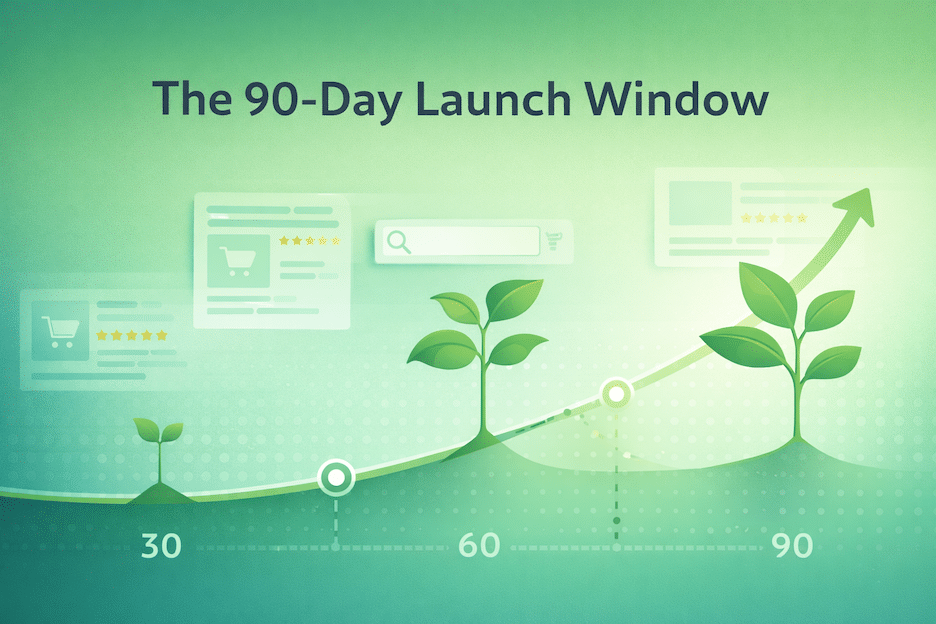Does Amazon Advertising Work?
Struggling to Make Amazon Ads Profitable? Let Our Team of Experts Take Over and Unlock Your Product’s True Revenue Potential

Amazon’s advertising platform has transformed dramatically throughout 2025 with the introduction of agentic AI capabilities and automated campaign management tools. The platform now features Amazon Marketing Cloud directly integrated into the Ads Console with no-code templates, Performance Plus and Brand Plus AI-driven campaign tools, and real-time bid optimization that adjusts every hour.
These advances mean advertisers can achieve results that were previously impossible without extensive technical expertise or large agency teams.
If you’re selling on Amazon, the advantages of leveraging the eCommerce giant’s massive reach are obvious. What’s less clear is how your business can compete and stand out in such a crowded marketplace.
Advertising on Amazon is an obvious answer, but what kind of advertising should an Amazon seller consider to drive traffic to their listing? Should cost per click ads such as Sponsored Products or Sponsored Brands be part of your marketing strategy? How about video ads, or Amazon Product Display ads?
More to the point, do Amazon ads really work, or are there better, more cost-effective ways to drive more sales?
To answer that question, let’s quickly look at the differences between the “Big 3” advertising platforms, Google, Facebook, and, of course, Amazon pay per click (PPC) advertising.
To begin with . . .
Ready to Start Growing Your Amazon Brand?
Canopy’s Partners Achieve an Average 84% Profit Increase!
Find out moreWhat is an Amazon PPC Ad?
Most of you out there know the answer to this question. Still, with over 4000 new Amazon sellers every day, this section might be be more relevant than you think.
Amazon PPC stands for Amazon Pay-Per-Click advertising. It refers to sponsored ads that appear in Amazon’s search results and product listings.
What is an Amazon PPC Bid?
Amazon allows sellers/vendors to bid on certain keywords so that their brand’s products appear higher in Amazon’s search results or product listings when shoppers search for those terms.
Sellers pay Amazon each time a shopper clicks on their sponsored ad. The amount they pay is determined through an auction system where sellers bid for keywords and placement.
Sellers have control over their PPC spending and can target their daily budgets and bids to make campaigns more efficient and profitable over time through tracking and optimization of their Amazon advertising account.
How Does Amazon Advertising Compare To Google And Facebook?
Developing off-Amazon traffic is a growing part of an online sellers’ tool kit. That’s one of the reasons why it makes sense for eCommerce brands to take a closer look at what a paid ad campaign from Google or Facebook might mean to your profit margin.
Alongside Amazon ads, Google and Facebook search ads are common weapons in a business’s advertising arsenal. But, which one of these digital advertising platforms wins in a head-to-head match-up?
Google has an enormous reach that allows for the broadest search of other advertising sources. Facebook is the largest social media platform in the world with approximately 3 billion users. And finally, Amazon had revenue of $554.03 billion US dollars in the twelve months ending September 30, 2023, with 10.32% growth year-over-year, up from 470 billion dollars in 2021.
These three platforms are all heavyweight champions in their own advertising niches, but they’re also very different when it comes to how they can be used. How do we know which platform performs best for Amazon sellers?
The next few sections will put them head-to-head to break down the main differences you should be aware of before you begin putting money behind an ad campaign.

How Much Does Advertising Cost on Google, Facebook, and Amazon?
Let’s start with the most important advertising consideration for most eCommerce businesses, cost. As an advertiser evaluating marketing channels, you’ll probably want to know two things, how much to spend, and, what will I get in return?
To answer those questions, here’s a closer look at how ad spend is calculated on each platform.
Google PPC Ads
With Google’s PPC ad platform, you bid on keywords to determine your ad’s placement.
First, you create an ad that utilizes keywords your potential audience are using to find either your own, or similar products. Then, once you have the keywords in place, Google prices your ads based on the projected number of clicks you attract and the competition for keywords you designate in your ads.
The popularity of your keywords and the number of clicks your ad generates will vary. Your advertising cost may fluctuate widely as a result.
Typical PPC ads can be reasonably low, with the average cost around $1.17 per click. Less competitive keywords may only cost cents on the dollar. With a good targeting strategy and niche, long-tail keywords, you can get high-quality clicks directed to people who are ready to purchase.
The downside is that sought-after keywords are highly competitive and expensive, ranging from $1.90-5.00 or more per click. Without a good understanding of searchers’ intent, your ad clicks may become an expensive way to generate brand awareness without the sales you need to offset the expense.
Facebook Ad Campaigns
Facebook’s ad platform charges advertisers based on impressions or clicks. The way Facebook defines an impression refers to the total number of times an ad appears on users’ pages.
On average, Facebook ads cost $0.97 per click or $7.19 per 1000 impressions.
While you can’t control the number of impressions or clicks an ad gets, on Facebook, you can set a budget for the total possible reach.
Facebook allows you to target a particular audience to budget ad amounts, and the algorithm handles the rest. With a set budget, advertisers are more able to control their spend.
Ready to Start Growing Your Amazon Brand?
Canopy’s Partners Achieve an Average 84% Profit Increase!
Find out moreAmazon PPC Ads
Similar to Google’s ad platform, when implementing an Amazon advertising strategy, you bid for keywords. Amazon’s PPC option is based on a real-time auction, meaning that to win the bid, you need to be willing to pay 1 cent more than others for the same keyword.
Let’s say that keyword is running ads that cost $1.00, and you bid $2.50 for it. If your bid is the highest, you’d only end up paying 1 cent more than the highest bid, so in this instance, you’d pay $1.01 for your targeted keyword.
The problem with the auction model is the “pay-to-play” system that those with bigger ad budgets can outbid those with a smaller bid, but there are ways you can optimize your ads to still have relevance.
In the last year, the monthly average cost-per-click (CPC) of ads on Amazon in the United States has ranged from 0.79 to 1.20 U.S. dollars.
At a lower average cost than Google or Facebook, Amazon PPC seems, at first glance, to be the most cost-effective option.
However, as any advertiser would know, it’s not just about how much you spend. It’s about your results.
That means, if we want to know if Amazon advertising really works, we still need to compare Amazon, Google, and Facebook in terms of overall effectiveness.
Which Advertising Channel is Most Effective for Driving Sales?
As an advertiser, you need to be cautious about spending too much without realizing a solid return on your investment.
The key is determining the stage of the purchase process your audience is at. Buyer intent is crucial in determining whether a platform is suited to your advertising objectives or not.
It really comes down to whether the clicks are coming from browsers or shoppers.
Purchase Intent on Facebook
Facebook is designed for engagement. For the most part, people are there to check up on their friends and engage with others.
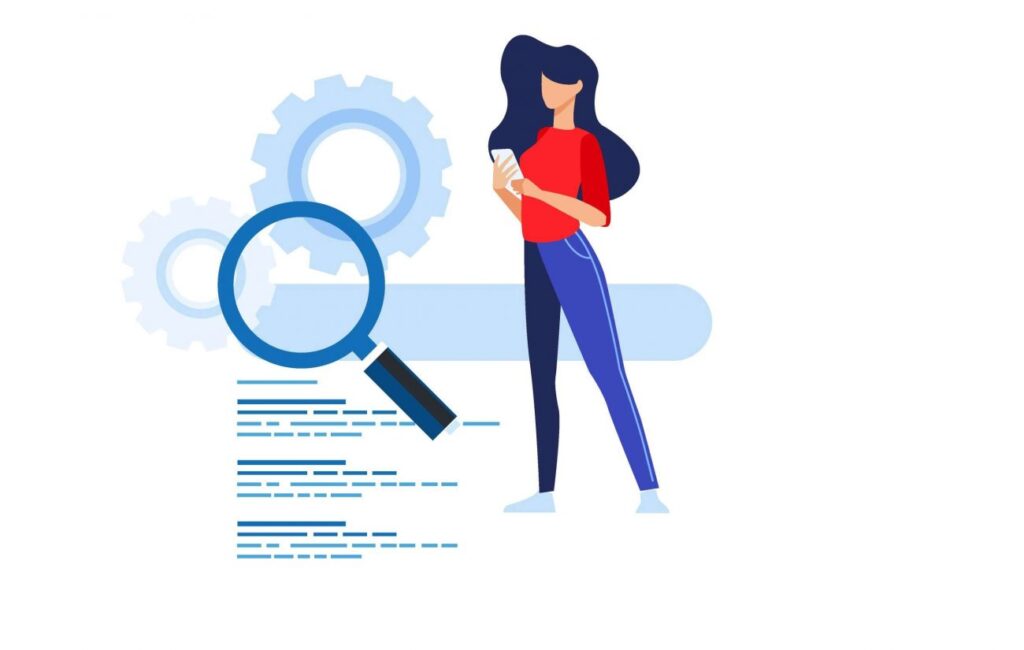
Typically, a Facebook user is not on the platform because they’re looking for a particular product, service, or deal.
At the same time, website browsers usually don’t want to leave the platform they’re on. Because of that, they’re less likely to click on an ad that they know will direct them to another site.
You can take advantage of Facebook’s social engagement to promote awareness of your product, but as a means for a direct sale, there’s a clear barrier between Facebook users and a checkout page.
Google users, on the other hand, may be a bit farther along with the buying process.
Purchase Intent on Google
Google is the world’s leading search engine with the most traffic and searches. As a user types in their query, Google will use keywords and intuitive search to find the best results. Google recognizes the inputs and assigns different relevant ads to searches that a user conducts.
In general, if you are running Pay-Per-Click (PPC) ads that have relevant keywords that Google finds as a match for the search, they will position your ad on the results page.
Typically, if someone is searching for something on Google, it’s because they have a question. They’re aware that they have a problem, and they’re actively searching for a solution. Serving your ad to users at this stage is a great way to boost brand awareness but requires you to tighten down your keyword optimization to be relevant.
However, most people are using Google to research their options, and they’re usually not ready to make an immediate purchase.
There are a lot of reasons why someone uses Google. They could be looking for a solution to a problem with no intention to buy, browsing for options, or comparing specific products.
When it comes to purchasing decisions, Google is the broadest search possible for the user. Users at this stage are often looking for necessary information and may be multiple steps away from being ready to make a purchasing decision.
Purchase Intent on Amazon
Amazon shoppers are on the platform to buy!
While some may just be researching for a future purchase, the majority of users on Amazon are there because they are ready to make a purchase.
That’s why Amazon ads tend to have an advantage over other ad channels when it comes to having a real, measurable impact on your bottom line. On average, Amazon ads tend to return 20% more on investment than a brand’s average marketing ROI.
This is really the key selling point of PPC advertising which includes Amazon Sponsored Brand, Sponsored Display, and Sponsored Product ads.
Amazon Live Selling Offers a Next Generation Marketing Strategy
Over the last few decades, we’ve enjoyed a wealth of innovations that have changed the way we work and live. Smartphones, online selling, and now, highly-interactive “live” selling events that blur the line between entertainment and commerce.
Amazon Live is a live streaming service allowing sellers to host their own live streams for customers on Amazon.
The videos can be found on Amazon.com’s main menu in the Amazon Live section. After clicking Amazon Live, shoppers are presented with the option to watch the live videos.
Shoppers can buy the products that are featured in the video, and interact with, or ask questions of the hosts.
- Amazon’s video programming highlights your brand and products through storytelling by real people.
- Use live product demonstrations to educate audiences on product features, benefits, and special offers, and help customers make informed buying decisions.
- Interact with shoppers in real time and help shoppers stay connected with ‘Follow.’ Shoppers that follow your brand on Amazon are eligible to get reminders any time you go live.
Amazon advertising is constantly changing. What worked six months ago might have already run its course. That’s why it’s important to keep abreast of the changes.
Which Ad Platform Wins?
When it comes to both raw ad cost and concrete ROI, Amazon delivers more sales and tends to cost less than Facebook or Google.
That’s not to say that Facebook and Google aren’t useful to people selling on Amazon. It just means that your Amazon ads should be the cornerstone of your strategy to drive sales and revenue.
The truth is that Amazon ads are extremely effective in driving traffic to your Amazon product listings. They give Amazon sellers a distinct advantage that they just can’t get from other marketing channels.
However, like any marketing channel, you need an effective strategy to make Amazon ads perform at their maximum for your business.
Getting Started With Amazon Ads
To get the most from your Amazon marketing strategy, it helps to have a fundamental understanding of how the ad platform can best be structured to point shoppers to your Amazon Store.
Digital marketing can be a little confusing for a novice. The next few sections will detail specific solutions to increase your return on investment, avoid potentially costly mistakes, and position your Amazon ad campaign for optimal impact.
What Are the 3 Main Types of Amazon Ads?
To begin crafting your Amazon ad strategy, you’ll need to consider the right type of ad for your campaign. Then, determine the ideal keywords that your potential customer may use in a search. After doing that, it’s a matter of setting a budget that leaves room for a profit.
There are three main Amazon Ads types, Sponsored Product, Sponsored Brand, and Sponsored Display.(A fourth, Amazon Demand-Side Platform (DSP) ads is detailed below)
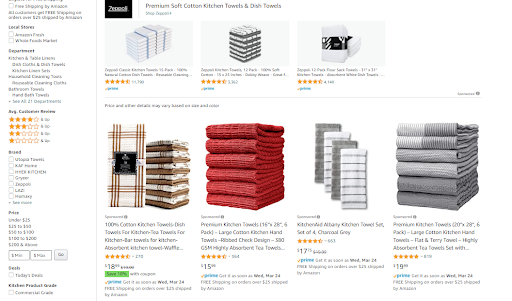
To begin crafting your Amazon ad strategy, you’ll need to consider the right type of ad for your campaign. Then, determine the ideal keywords that your potential customer may use in a search. After doing that, it’s a matter of setting a budget that leaves room for a profit.
There are three main Amazon Ads types, Sponsored Product, Sponsored Brand, and Sponsored Display.(A fourth, Amazon Demand-Side Platform (DSP) ads is detailed below)
Amazon Sponsored Product Ad: This ad type highlights a specific product, gets a prominent placement in relevant searches, and drives buyers directly to the Amazon sales page for this particular product. Amazon Sponsored Products Ads dominate the most prominent locations in search results’ real estate.
Sponsored Brand Ads: These ads are displayed as a banner headline on the search result page following a shopper’s search query and prominently features your brand logo, a customizable headline, and a few of your products.
Amazon Sponsored Display Ads: This is not a keyword targeting ad. Instead, with a display ad, you target specific audiences or products. These ads will often have a bold image with a short headline copy that grabs the shopper’s attention. The goal is to persuade them to click on your product detail page.
How Much Does it Cost to Put an Ad on Amazon?
Everyone wants to know exactly how much they should spend on Amazon PPC. The answer can range widely between different sellers and depends on countless factors both in and out of the business’s control.
If you’re new, a good rule of thumb is to start slow and focus on your top-performers.
As you decide on your ad budget, keep in mind that high-performing ads convert at approximately 36%, with the average spend being a little more than $260 with a return of roughly $900.
Because Amazon ads (with the exception of Sponsored Display Ads), are pay-per-click, you only pay once your ad is clicked. If you strategize well, you can keep costs low while getting your ads in front of people who are ready to buy.
Ready to Start Growing Your Amazon Brand?
Canopy’s Partners Achieve an Average 84% Profit Increase!
Find out moreHow to Begin With Amazon Keyword Strategy
Plan your keyword strategy and curate an advertising report to help narrow, or filter the search process, target long-tail phrases that are specific to your product.
For example, if you’re selling a skincare mud mask, targeting keywords such as “face mask” may be too broad, making it less relevant as far as targeting a specific buyer. The result could be that you’ll spend more than you may get back in return.
The more specific your targeted keyword (such as “hydrating mud mask for skin”) the more you narrow your potential audience down to people searching for similar products.
Of course, there are dangers to whittling down this audience too much. Generally, long-tail keyword phrases that are specific and relevant to your product tend to attract higher quality traffic that is more likely to convert.
How to Boost Ads Performance by Using Negative Keywords
You’ll also want to exclude irrelevant audiences by adding negative keywords into your campaigns.
Selecting negative keywords helps Amazon to match your ad more precisely to buyers by making sure your ad isn’t placed in front of irrelevant audiences.
If you’re not using negative performing keywords, you run the risk of…
- Low click-through rates
- Low conversions
- High ACoS
- Possible lower product placement for some searches
All Face Masks are Not Equal
You could easily have your ad for “women’s face mask” appear to people looking for any entirely different type of face mask. Now we’re not talking about skincare. We’re talking about the kind of mask that suddenly became a very popular seller in 2020.
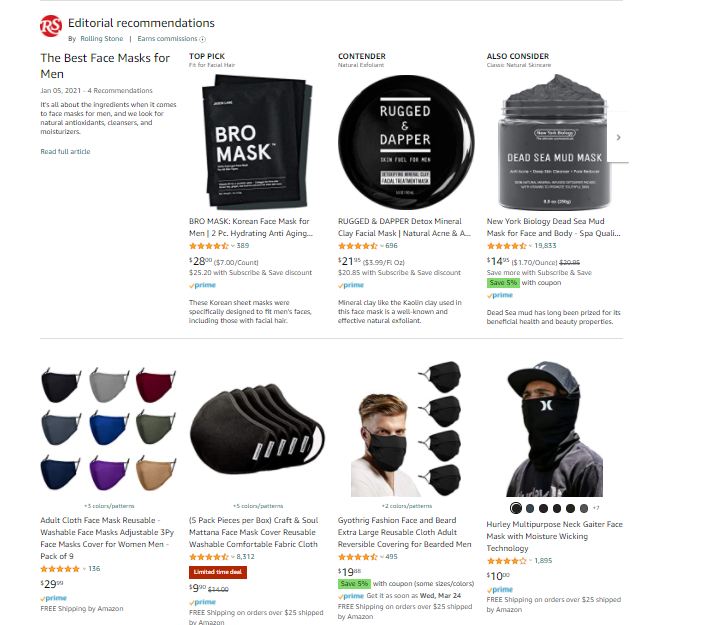
During the height of the pandemic, Amazon sellers could easily have seen their ads for “women’s face mask” appear to people looking for any entirely different type of face mask. I’m referring to the kind of mask that suddenly became a very popular seller in 2020.
Using negative keywords like “cloth face mask” or “medical face mask” within the ad campaign tells Amazon to exclude specific search terms to make your ad appear in fewer irrelevant searches.
You can choose between negative phrases and negative exact matches to help Amazon determine how your ad and product should be placed when search terms match your keyword campaigns.
Once your campaigns have run for a few weeks, you’ll have a better sense of additional keywords to exclude.
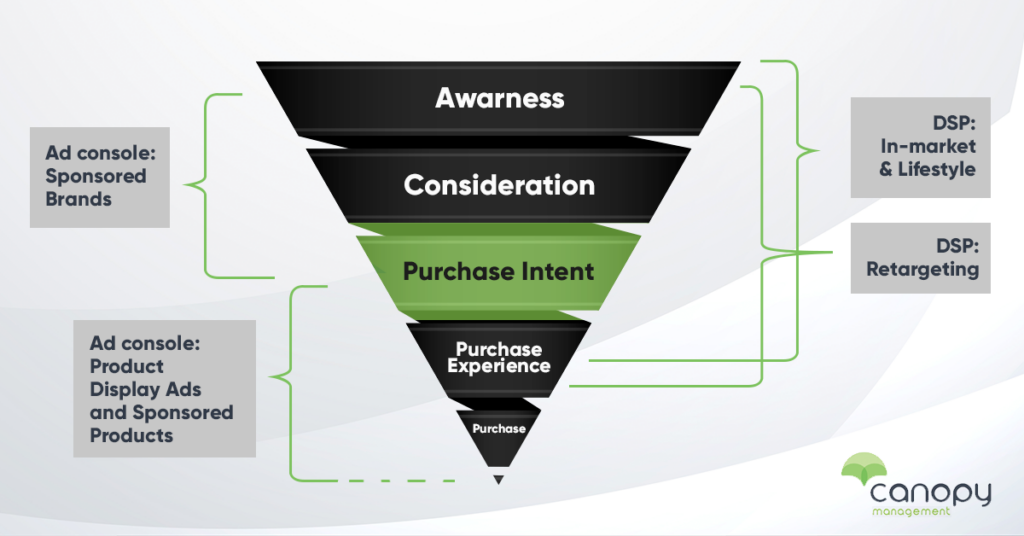
Don’t Forget Amazon DSP
Over the last number of years the world has changed in several significant ways. One of those has to do with privacy. It seems that every search engine has come up with their own way of curtailing access to customer data.
Privacy concerns aside, for Amazon sellers, that customer data represented a gold mine of actionable background information.
It’s not all lost. You still have the opportunity to source it from Amazon!
One great way to take advantage of the wealth of Amazon’s massive first party data is through Amazon demand-side-platform (DSP).
A DSP ad offers one of the most impactful opportunities for advertisers to scale in the post-third-party-data world. Ads for your products are placed on the Amazon advertising platform, audience network partner sites and apps, as well as a number of placements and media player options within the Amazon website itself.
And, it gets better!
Amazon lends targeting options to DSP advertisers as well.
That’s right. Amazon DSP ads give YOU, the advertiser, the targeting power of their first party data.
Targeting Options Offered by Amazon DSP
In-Market – These are actual browsers and shoppers of specific products or categories ON Amazon.com.
Lifestyle – These are people who’s shopping patterns have been identified to fit a specific pattern that can categorize them as tending to make certain lifestyle choices.
Demographic – Gender, age, income level, etc.
Retargeting – Re-marketing people who viewed your detail pages but didn’t convert.
Advertiser Audiences – Not only can you upload a custom audience of your own (email list or customers from your website), but you can also add a pixel to your site to create this audience.Other Custom Audiences – You also have the ability to target interests based on things like Prime Video views.
Are Amazon Ads Worth it?
The verdict? Yes, absolutely.
A solid Amazon ad strategy will help your Amazon marketing. It can definitely help support your business goals, from boosting brand awareness to gaining market share to driving revenue. For Amazon sellers, Amazon advertising offers benefits that you just can’t get with Facebook or Google ads.
On the flipside, going in without a strategy or failing to continuously adapt your strategy to fit your situation can end up costing you thousands of dollars.
So, what’s the solution?
Many otherwise successful Amazon sellers don’t have the time or expertise to successfully manage their own Amazon PPC or Amazon DSP campaigns.That’s why they reach out to our team of Amazon advertising experts at Canopy Management.

Canopy Management is Here to Help
Canopy Management is a full-service marketing agency for Amazon and Walmart sellers. Our team consists of former Amazonians, multi-million dollar sellers, and award-winning experts.
When you consider the many ways that Canopy Management can help you grow your business, you’ll see why selling on Amazon is much easier “under the Canopy.”
- Strategic Growth Planning
- Listing Copywriting Optimization
- Listing Photography
- Product Videography
- Advertising Management
- Customer Service
- Demand Side Platform (Amazon DSP)
- Amazon Posts
- Full Service Management
- Amazon Review Aggregation
Ready to Grow Your Amazon Business?
Start applicationFrequently Asked Questions
How has Amazon advertising changed in 2025 with AI integration?
Amazon’s advertising platform underwent significant transformation in 2025, introducing agentic AI capabilities that reason, plan, and act with seller permission. The Amazon Marketing Cloud now sits directly in the Ads Console with AI-powered no-code templates, eliminating the need for SQL knowledge.
New tools like Performance Plus and Brand Plus automate targeting and optimization using trillions of shopping signals, while Creative Studio can generate professional ad concepts through simple conversational prompts. These advances have shifted Amazon advertising from a manual bidding exercise to an AI-assisted strategy platform that makes hour-by-hour optimizations automatically.
Should small businesses invest in Amazon DSP or stick with Sponsored Products?
Most small businesses should master Sponsored Products and Sponsored Brands before investing in Amazon DSP. Sponsored ads are self-service, have lower minimum budgets (you control daily spend), and appear directly in search results where shoppers have high purchase intent. DSP requires either a managed service agreement or significant expertise, typically works better with budgets above $35,000 annually, and focuses on audience targeting across Amazon and third-party sites.
Start with Sponsored Products to build sales history and understand what converts, then consider DSP once you’re spending $3,000 monthly on sponsored ads and want to expand beyond direct response into brand awareness and retargeting strategies.
What’s a realistic timeline to see results from Amazon advertising?
You’ll typically see initial data within the first week, but meaningful results take 45 to 60 days of consistent optimization. The first two to three weeks focus on data collection through testing different keywords and bids. Weeks four through six involve refining targeting based on actual performance data from your campaigns.
By weeks eight and beyond, you’re scaling what works while cutting what doesn’t. Accounts starting with high ACoS (above 40 percent) often see eight to 15 percentage point improvements within this timeframe, though results vary significantly by category competitiveness, budget size, and product pricing. The key is giving campaigns enough time to gather statistically significant data before making major changes.
How much should I budget for Amazon advertising as a new seller?
New sellers should start with 10 to 15 percent of their target monthly revenue allocated to advertising, with a minimum daily budget of $30 to $50 per campaign to gather meaningful data. For example, if you’re targeting $10,000 in monthly sales, plan to invest $1,000 to $1,500 in advertising initially. This budget allows you to test multiple keywords and ad types while building the sales history and reviews that improve organic ranking.
Expect to run at break-even or slight loss during your first 60 to 90 days as you invest in visibility and ranking. Once products gain reviews and organic momentum, you can typically reduce ad spend percentage while maintaining or growing total sales. Track your break-even ACoS (unit margin divided by selling price times 100) to ensure you’re not losing money on every sale, even during the launch phase.
Can I run successful Amazon ads without using negative keywords?
Running ads without negative keywords is like fishing with a net full of holes. You’ll waste significant budget on irrelevant clicks that never convert. Negative keywords tell Amazon which searches should NOT trigger your ads, preventing your skincare mud mask from showing up when someone searches for COVID face masks, for example. Without negative keywords, you’ll typically see low click-through rates, poor conversion rates, high ACoS, and possible lower organic placement for some searches.
Start building your negative keyword list after your first two to three weeks of campaign data by reviewing your search term report and adding any terms that received clicks but generated no sales or had terrible conversion rates. This process should be repeated weekly as part of ongoing optimization.
Is Amazon advertising more effective than Google Ads or Facebook Ads for eCommerce?
Amazon advertising typically delivers better return on ad spend for eCommerce businesses selling physical products because shoppers on Amazon have immediate purchase intent. While recent industry averages show Google Ads around $1.17 per click and Facebook around $0.97 per click, Amazon PPC typically ranges from $0.79 to $1.20, and those clicks come from people actively shopping, not just browsing. The key difference is buyer intent. Facebook users are there to socialize, Google users are researching options, but Amazon users are in buying mode with credit card already on file.
This translates to higher conversion rates and typically better ROI for product sales. However, Google and Facebook still serve important roles for brand awareness, remarketing, and driving external traffic to build your Amazon sales velocity. The most successful brands use all three platforms strategically for different funnel stages.
How do Amazon’s new AI bidding tools compare to manual campaign management?
Amazon’s AI bidding tools like Performance Plus and dynamic bidding can outperform manual management by processing millions of data points and adjusting bids in real time based on likelihood of conversion. These tools now update every hour rather than daily or weekly, catching trends and opportunities that manual management misses. However, AI tools work best with clear constraints and human oversight. You still need to set appropriate targets (like target ROAS), provide sufficient budget for the AI to optimize effectively, and monitor performance to ensure automation aligns with your business goals.
The biggest advantage is time savings, with AI handling routine adjustments while you focus on strategy, new product launches, and testing. Brands using AI-powered bidding consistently report 40 to 60 percent improvements in campaign performance compared to manual management, primarily from faster reaction to market changes and elimination of underperforming spend.
What’s the difference between Sponsored Products, Sponsored Brands, and Sponsored Display ads?
Sponsored Products are keyword-targeted ads that promote individual product listings and appear in search results and on product pages. These are your workhorse ads, typically generating the highest return because they catch shoppers actively searching for your products. Sponsored Brands appear as banner headlines at the top of search results, featuring your logo, custom headline, and multiple products, building brand recognition while driving traffic.
Sponsored Display ads target audiences or products rather than keywords, appearing on product pages, customer review pages, and even off-Amazon sites to retarget shoppers who viewed your products. Start with Sponsored Products to drive immediate sales, add Sponsored Brands once you’re selling consistently to build brand awareness, and use Sponsored Display for retargeting shoppers who didn’t purchase and for defensive targeting on competitor listings. Each ad type serves a different purpose in your overall strategy.
Do I need an agency to manage Amazon advertising or can I do it myself?
You can absolutely manage Amazon advertising yourself if you’re willing to invest time learning the platform and maintaining consistent optimization. Many successful sellers run their own campaigns, especially in the early stages when budgets are smaller and they’re still learning what resonates with customers. However, consider an agency when you’re spending more than $5,000 monthly on ads, managing multiple brands or product lines, lacking time for weekly optimization, or struggling to improve performance despite consistent effort.
Quality agencies bring specialized expertise, proprietary tools, and experience across hundreds of accounts that can identify opportunities you might miss. The trade-off is cost (typically 10 to 20 percent of ad spend or monthly retainers) versus the time savings and potential performance improvement. Start by learning the basics yourself, then evaluate whether agency support makes sense as you scale.


